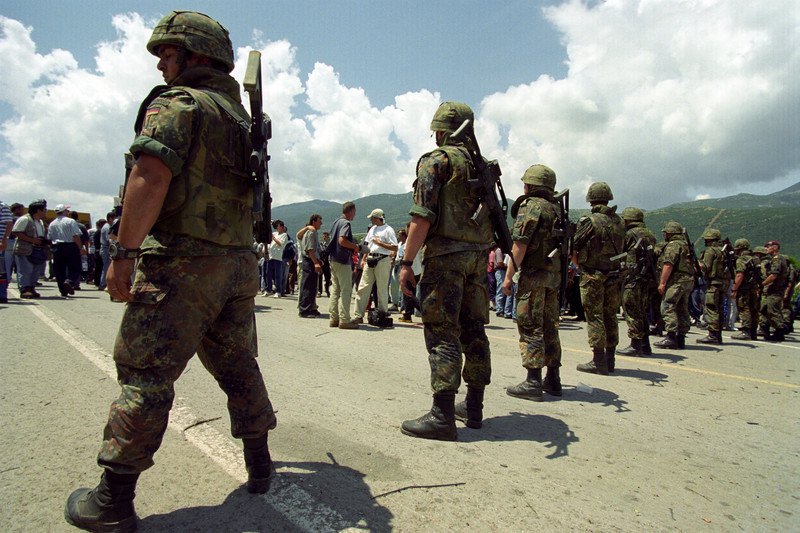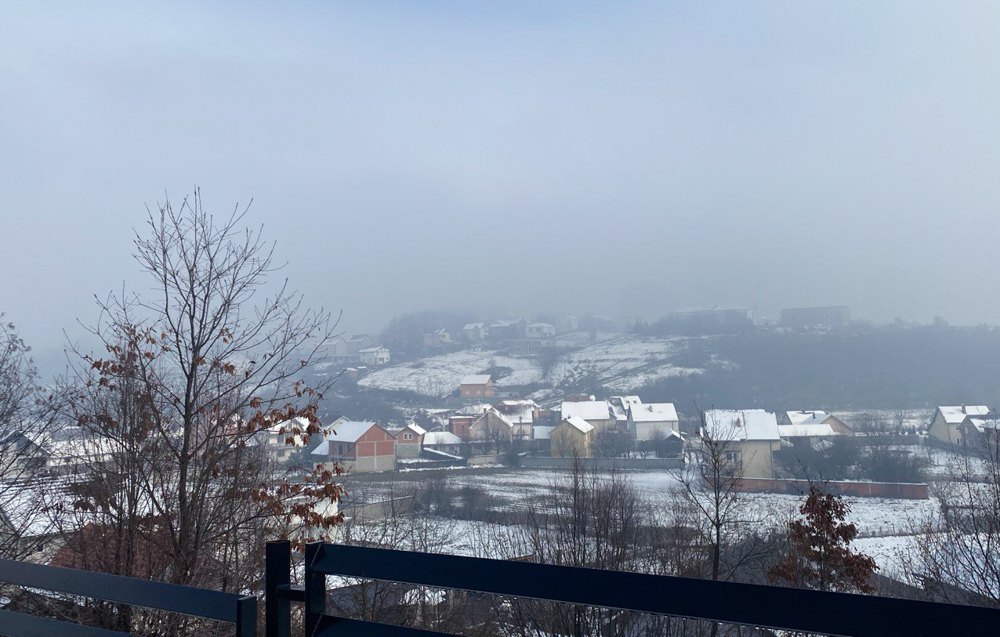
"They killed because they could kill"
The village of Račak is located an hour's drive from Kosovo's capital, Pristina. Today, the village has a respectable appearance: elegant, mostly two-storey houses, and good roads. However, during the war, according to the locals, 70-80% of the houses were burnt or destroyed as a result of shelling. Now more than 2,000 people live here.
At the end of January, one street was still decorated with national and American flags. Not long ago, commemorative events were held here to mark the next anniversary of the tragedy. The memory of the victims, who are considered martyrs of the nation, was honoured by the country's top officials.
"Our memory is a shield against oblivion and a guarantee that such crimes will never happen again," wrote Kosovo's President Vjosa Osmani on social media.
The memorial and cemetery are located on one of the hills in the village. There is also a monument to the American William Walker, the head of the OSCE mission, who visited Račak with journalists immediately after the tragedy and thanks to whom these events received international attention.
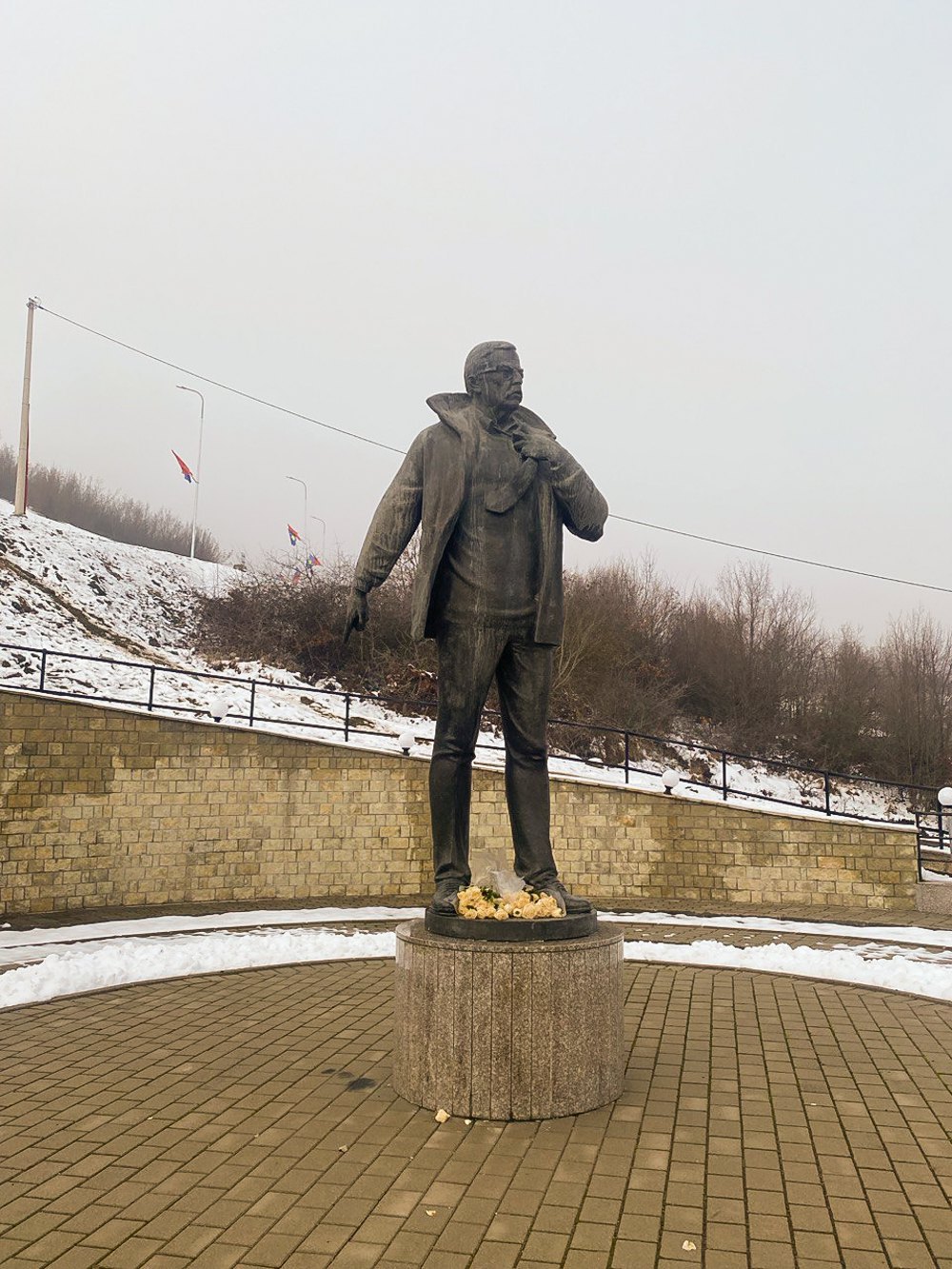
Agron Mehmeti, an eyewitness to the Račak massacre, survived the events at the age of 22. He also testified at the international tribunal in The Hague against Yugoslav President Slobodan Milosevic. Today, Mr Agron works for the municipality of the neighbouring town of Štimja. Recently, the man has been avoiding interviews, as he admits that he then spends several days delving into traumatic memories. However, he agrees to talk to a journalist from Ukraine.
Mr Mehmeti shows photos of his family at the memorial: his uncle and cousin, who were his age, were killed in the massacre. "During the war, many people left the village, but then some returned. My cousin was not at home either, but my uncle, her father, called me home, saying that it was safe here now. But the worst happened," says Agron Mehmeti. Among the 45 people killed by the Serbian military, the oldest man was almost 100 years old, and the youngest was a 16-year-old boy. Our interlocutor points out that several people on the memorial have the same surname, as members of the same family were killed.
At the time of the Račak tragedy, according to Agron Mehmeti, there were 200-250 people in the village, including more than 10 children. On the night of 15 January 1999, several thousand Serbian soldiers surrounded the village and began heavy shelling.
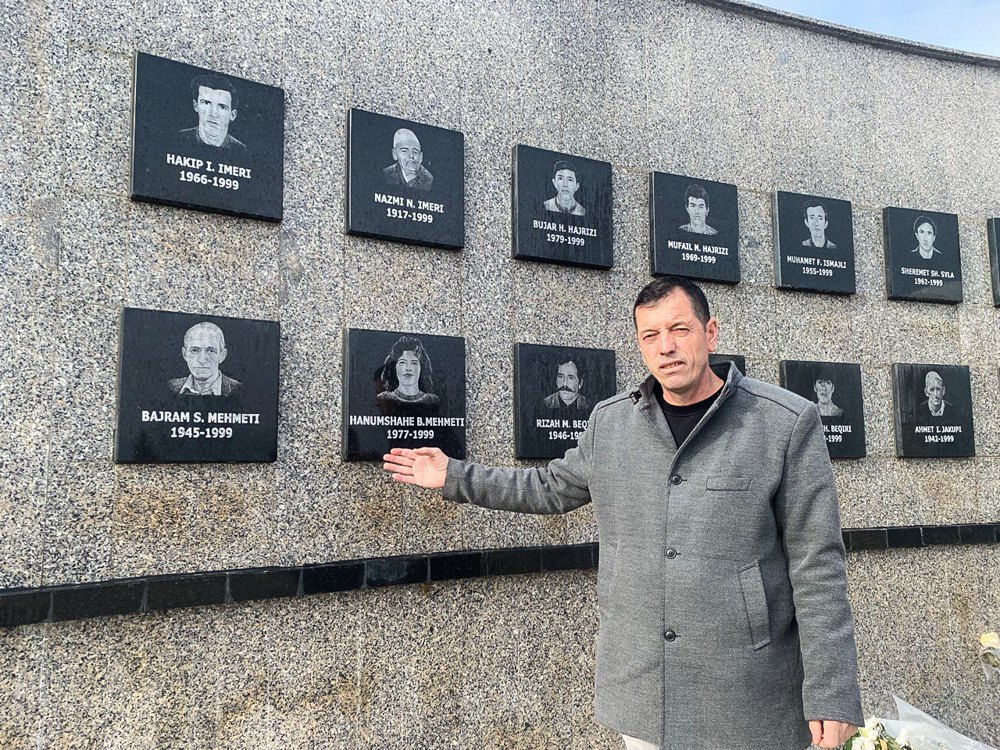
"My uncle, whose family we lived with next door, woke me up in the morning and said that the shelling was very serious. I did not immediately understand, because during the war you do not perceive shelling as an emergency. But my uncle insisted that something else was happening," says Agron.
About two dozen neighbours gathered in one place. The shelling intensified, so Agron tried to look for a more protected place where the Serbs could not reach. The military and police had already entered the village. It was dangerous on the street because snipers were working, and a local boy was killed in front of Agron.
Mehmeti miraculously escaped, but he heard voices, shots and screams from his fellow villagers. The military and police were killing everyone they could. According to him, a child in one family was wounded - the military found the family and shot them by their screams. He recalls that in the evening everything quieted down. All this time, he was expecting OSCE representatives to stop the violence.
In the evening, the OSCE mission did arrive in Račak, and Agron was one of the first to talk to them. He told the interpreter that he knew about the killing of what he believed to be about five people, but the interpreter said that it was much more horrific.
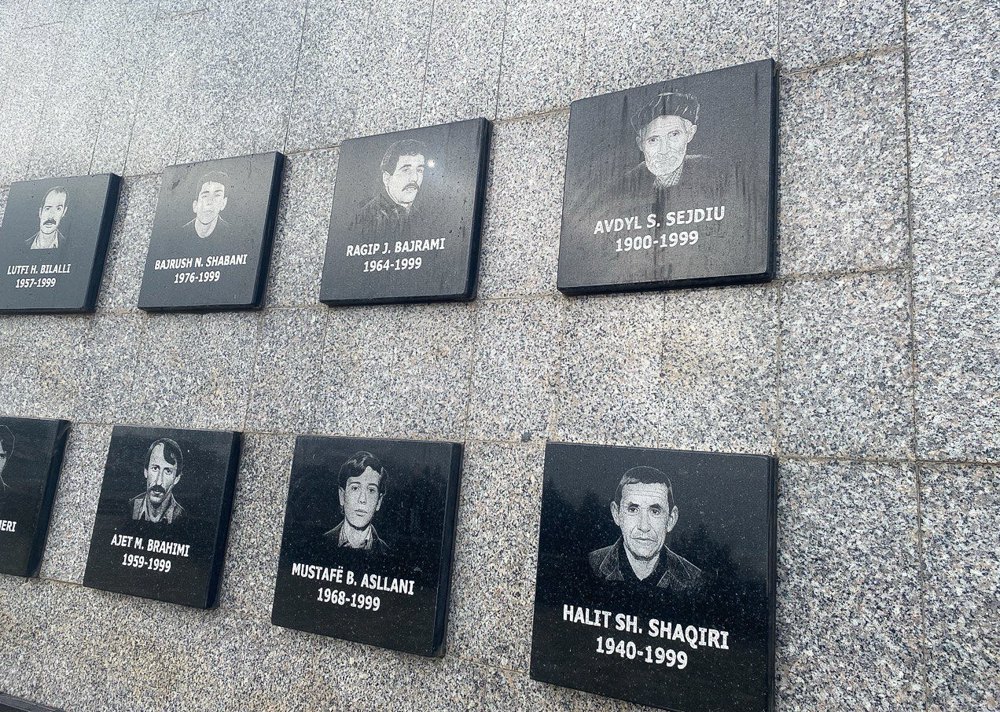
A crime against humanity or ‘staged and falsified’?
Mr Mehmeti says that the Serbian military did not allow a foreign mission to Račak while the massacre was taking place. When the mission got to the village, they were able to take some of the wounded to hospital, and Agron went to the villagers' houses and found the bodies of the dead. He found about 18 dead. Some people were beheaded, others had signs of torture on their bodies.
The next day, Račak was visited by William Walker. Following the visit, during a press conference in Pristina, he called the events a crime against humanity and called for decisive action.
The bodies of those killed in the village were deposited in a mosque. The Serbian military demanded medical examinations, but the Kosovo Albanians wanted to bury them as soon as possible. Upon learning of the massacre, a detachment of the Kosovo Liberation Army approached the village, and fighting continued for several days.
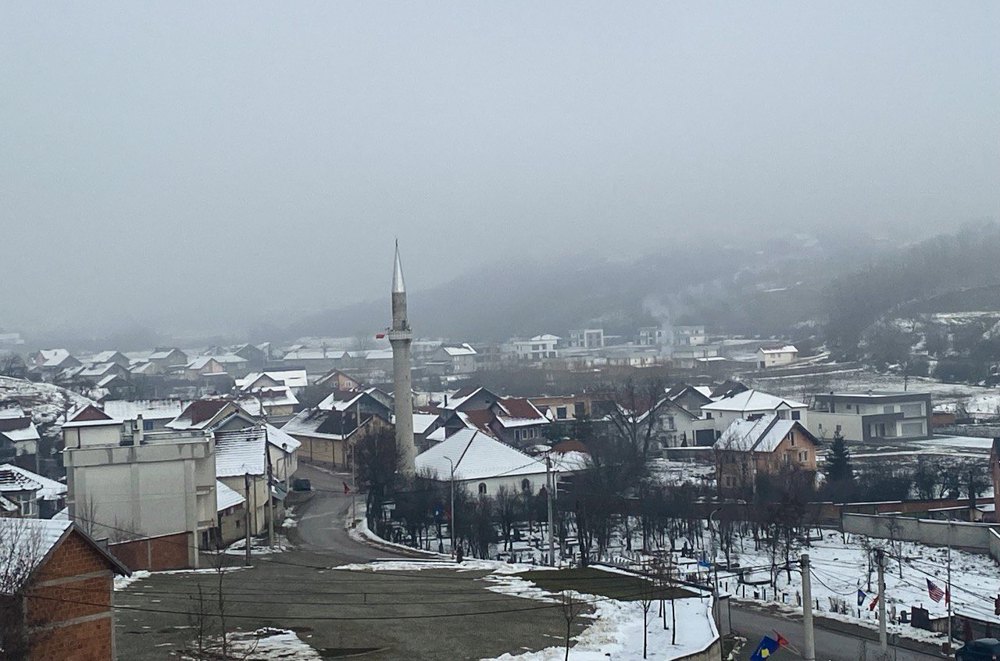
On 19 January, the bodies were finally sent to Pristina for examination. Among the experts were Serbian and Belarusian specialists, and Albanians consider an expert from Finland to be truly independent. She concluded that all the victims were civilians.
The victims were buried only on 11 February, which, according to Mr Agron, was ‘torture after torture’, as it was almost a month after the deaths.
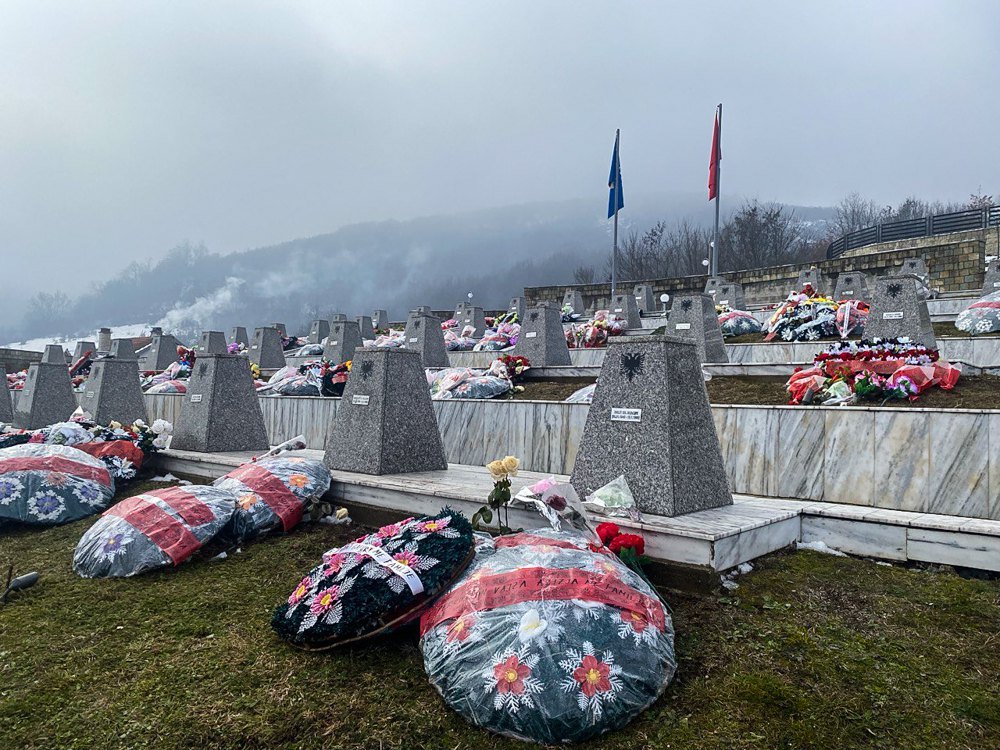
26 years have passed since the Račak tragedy, but Serbia still does not admit its guilt and even more so, it speaks of ‘falsification and staging’. In 2021, with the support of the Serbian Ministry of the Interior, a documentary was made claiming that it was staged by Albanians to provoke NATO to bomb Serbia. And the dead were not civilians, but soldiers in disguise. And this is so similar to what Russia is claiming about the events in Ukraine today.
Serbian journalist and political scientist of Ukrainian origin Boris Varga emphasises that Serbia has not gone through the process of facing the past in the context of official Belgrade's responsibility for the wars of the 1990s in Croatia, Bosnia and Herzegovina, and Kosovo.
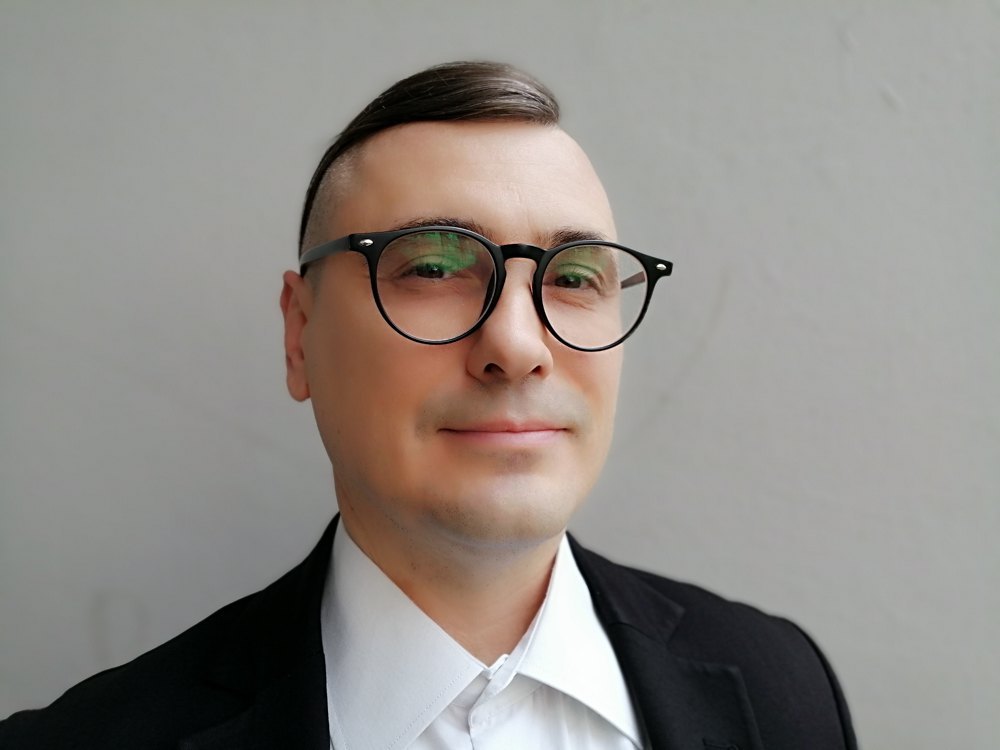
"The war crimes of the 1990s have always been a kind of taboo in Serbia. In particular, over the last decade, when President Aleksandar Vučić (who served as Minister of Information under Milošević - Ed.) and his Serbian Progressive Party have been in power. In Serbia, very little is known about Serbian crimes in Kosovo because they are linked to NATO air strikes in Serbia and Montenegro, which are considered aggression by the West, the US and the EU against the Serbs," Varga explains.
He notes that the Serbian media reported most on the crime against Albanian civilians in the village of Račak, but presented it as an Albanian production and the reason for NATO's intervention and Kosovo's secession from Serbia.
Denial of guilt and discrediting investigations
Similarly, information about the executions of civilians and rape in the Bucha district of Kyiv Region, where more than 1,700 civilians were killed, the detention of more than 350 civilians in a school basement in Yahidne, Chernihiv Region, and the mass graves of local residents in Izyum, Kharkiv Region, in 2022, where about 500 bodies of tortured people were found, are documented as war crimes, but Russia responds to them in the same way - as ‘staged, falsified’ or as consequences of the actions of the Ukrainian army.
StopFake fact-checker Olena Churanova notes that as soon as it became known about the crimes of the Russian army in Bucha, the Russian propaganda machine launched a strategy of denial and blame-shifting. And Russian Foreign Minister Sergey Lavrov keeps repeating that there are no lists of people who died in Bucha, which is also untrue. StopFake refuted these fakes.
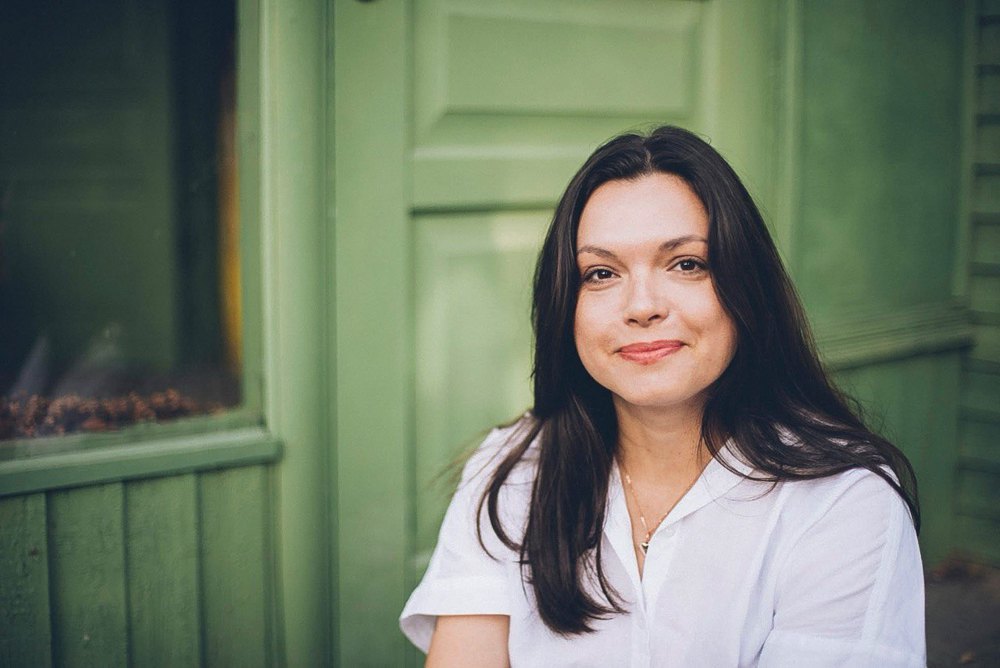
"The main strategy for both its own and international audiences is to deny Russia's guilt in the crimes. Next, the Kremlin is working on a strategy of shifting the blame, where it is already using various methods - blaming the Ukrainian army for what happened, fakes about staged crimes, etc. Any evidence provided by international organisations is also refuted by Russia with a single argument: that all these institutions are biased and their investigations are biased," Churanova says. In addition, propaganda films are made for foreign audiences that interpret events through Russian disinformation narratives, such as the propaganda film The Witness.
Of course, as soon as evidence of crimes is made public, the information campaign is most powerful - constant injection of various fakes and conspiracy theories. After the results of the investigations are released, Russia discredits the institutions that conducted them and claims that the data is unreliable. Another approach used during a full-scale war is to focus on the alleged mass crimes of the Ukrainian army instead of mentioning what really happened in the Kyiv or Kharkiv Region.
The fact-checker sees some similarities between Russia's actions and what happened during the wars in the Balkans.
"Of course, there are similarities. For example, when Serbia denied for a very long time the massacres in Srebrenica, where Serbs killed up to 8,000 Bosnian Muslims in 1995, or when similar fakes were spread about the shelling of people in Sarajevo, as we have fakes about the alleged shelling of civilians by the Ukrainian army, etc. Similarly, they also worked to discredit the organisations that investigated these crimes," she emphasises.
Russia has learnt the lessons of the wars in the former Yugoslavia
Boris Varga also speaks about parallels in the attitude to war crimes in Serbia and Russia. In his opinion, everything is similar to the way Russia is now explaining the events in Bucha and Irpin. Serbia knows a little more about the Srebrenica genocide in Bosnia. "This is because the denial of the crimes and genocide in Srebrenica is part of the political campaign of all Serbian nationalists in the region. Their main political slogan is ‘Serbs are not a genocidal people’, and this is now considered an axiom," the journalist and political scientist notes.
In general, there is currently no public demand for the truth in Serbia, not only about crimes in Kosovo, but also in other countries. The beginning of Russia's full-scale invasion of Ukraine has awakened revanchist sentiments among Serbs in the Western Balkans. The prevailing view is that Kosovo Albanians, with the help of the West, forcibly seceded from Kosovo. In Serbian political discourse, "Kosovo is the heart of Serbia", a key component of Serbian national identity and the historical cradle of Serbian Orthodoxy. And the International Criminal Tribunal for the former Yugoslavia is mostly seen in the Serbian media as anti-Serbian, as it has allegedly convicted ethnic Serbs the most.
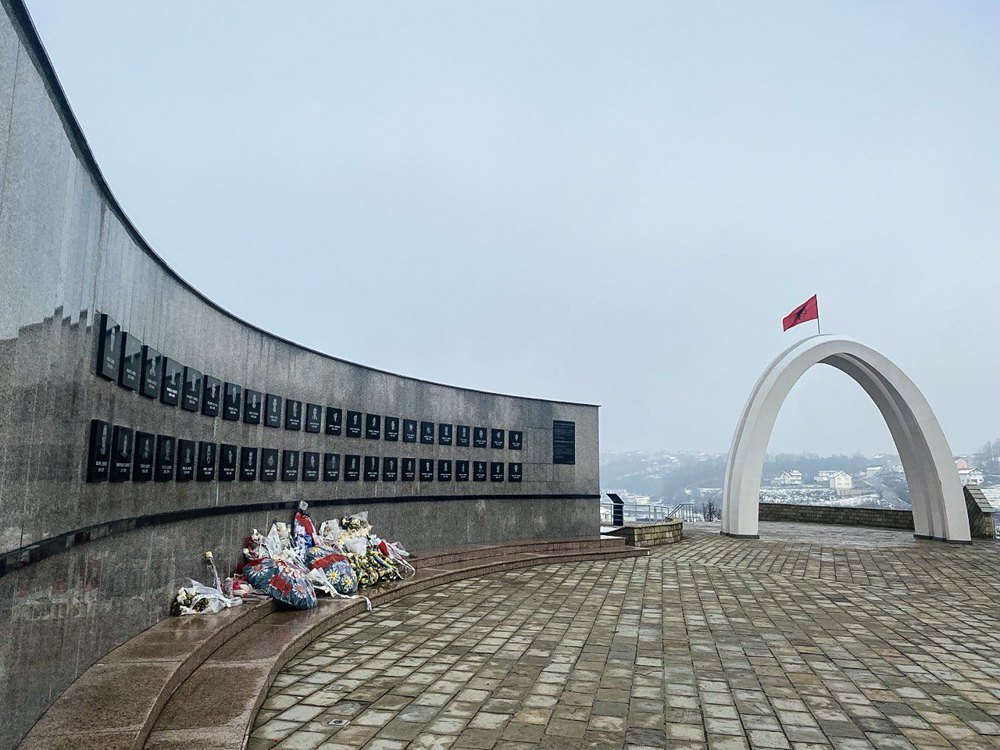
In addition, younger generations know little about the wars of the 1990s. For example, journalist Radet Radovanovic's book Laughing Beneath the Gallows: The War in Kosovo – Everything You’d Rather Not Know (Serbian: Smeh pod vešalima: Ono što ste želeli da ne znate o ratu na Kosovu) was refused by five Serbian publishing houses.
At the same time, Varga is confident that Serbia is changing: protests and blockades have been going on for almost three months in the country over the deaths of 15 people as a result of the collapse of the roof of the recently renovated railway station in Novi Sad. The protesters are mostly young people - students and high school pupils. They are demanding different social values, and there is a chance that in time there will be a demand for a clash with the past. "This will be a long and difficult path for Serbian society," Varga says.
Russia has learnt from the experience of conflicts in the former Yugoslavia and is now aggressively spreading propaganda and disinformation, justifying the crimes it commits in Ukraine every day. "It will probably take several generations for Russia to change its attitude towards Ukraine and Ukrainians, provided that Russia gets rid of its imperial ambitions," Varga is convinced.
War crimes can be explained, but not justified
War crimes accompany all wars, says Hanna Statyvka, a psychotherapist and trauma therapist, a lieutenant in the reserve of the Armed Forces of Ukraine. They can be explained from a psychological point of view, but they cannot be justified. She emphasises that psychological experiments have shown that humans are capable of hurting others, especially if an authoritative figure takes responsibility for these actions. At the same time, an important, archaic desire to belong to a social group is triggered, and for the sake of this feeling, a person is also capable of violating moral norms.
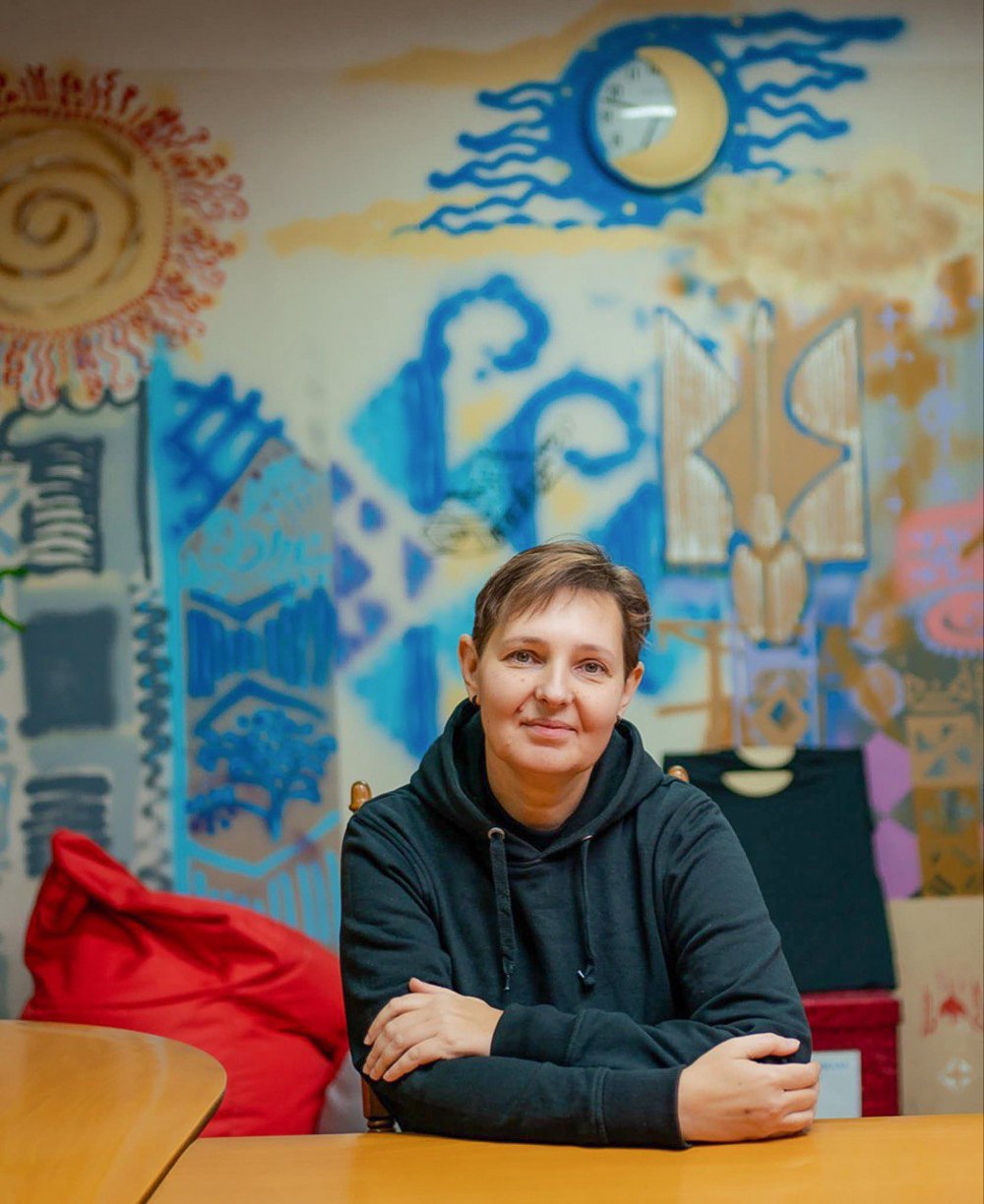
The psychotherapist believes that it is impossible to know for sure the purpose of war atrocities - intimidation, suppression of resistance - but it is possible to base assessments on the consequences."The Russians have done this to all the nations they have conquered. They act strategically. Atrocities are only the first step, and then they turn the conquered peoples into a tool for conquering new territories,"says Hanna Statyvka.
She emphasises that war crimes are not the result of people with sadistic tendencies or psychopaths being brought together in one place."Absolutely not. This is a rational strategy of the Russian state. These are not sadists and psychopaths, these are people who grew up in the Russian culture system that promotes the right of the strong. Watch Russian TV shows - they are always about the military, police (cops) and romanticised bandits. A person hears about ‘Great Russia’ from kindergarten, and therefore grows up able to do what is allowed in their culture," the psychotherapist says.
According to the National Police of Ukraine, since the beginning of Russia's full-scale invasion of Ukraine, more than 140,000 crimes have been registered (as of the end of January 2025) committed by the Russian military or their accomplices. But the war continues, and so do the crimes. Lawyer Dmytro Naumenko, coordinator of the public reception centre of the Chernihiv-based human rights organisation MART, is involved in documenting war crimes.
According to him, since February 2022, 5,500 episodes that can be considered war crimes have been recorded in the Chernihiv Region alone. The MART NGO, which is part of the global initiative Tribunal for Putin, records these crimes. The official registration and investigation is carried out by law enforcement agencies. The initiative, which brings together a number of human rights organisations, aims to bring those responsible for war crimes in Ukraine to justice and also works internationally.
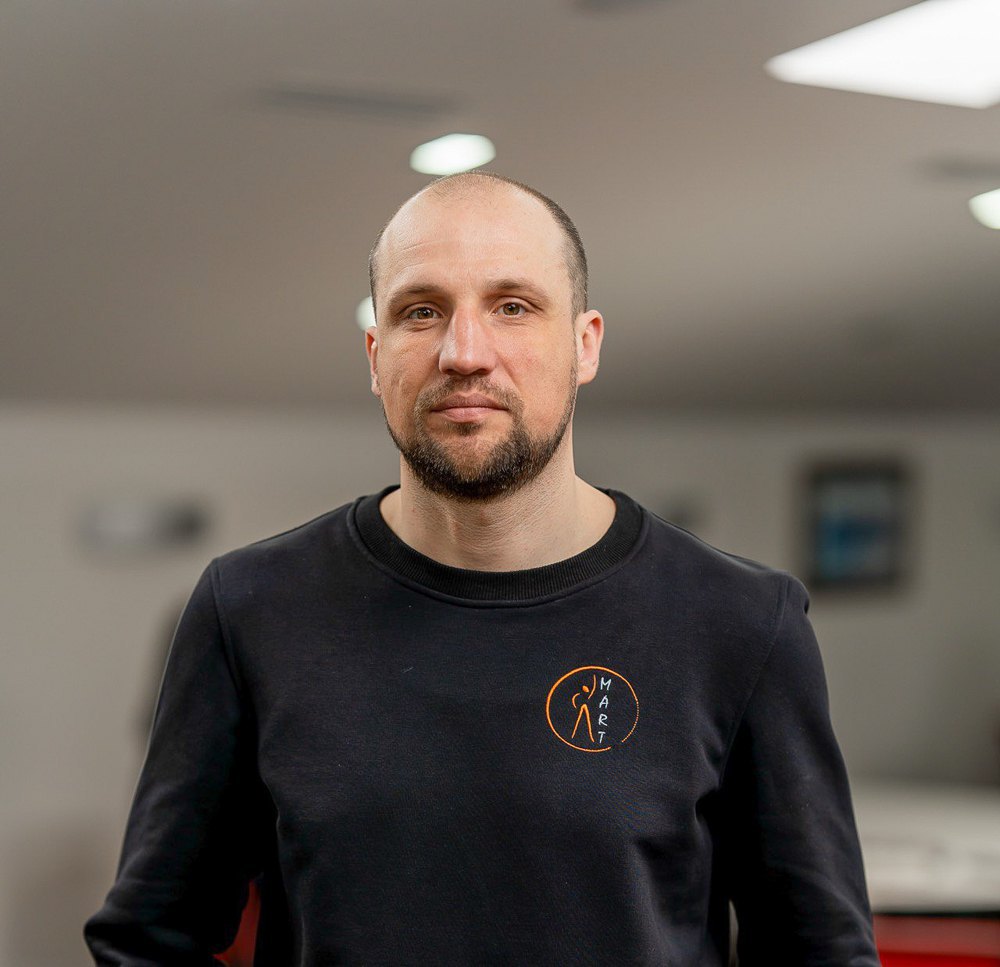
"New episodes of war crimes in the region are added every day, as the Russian army is constantly shelling the border. This is what we document from open sources and record during field missions. There are crimes against persons and crimes against property," the lawyer explains.
National courts in Ukraine pass sentences on Russian war criminals, but most of them are in absentia. It is not uncommon, at least in Chernihiv, for even detained suspects to be exchanged. "I have reservations about when court sentences can actually be executed. I have a separate reservation about appealing against verdicts due to violations of procedures, loss of evidence or the expiration of the statute of limitations," the expert adds.
No one knows when the war in Ukraine will end and how war criminals will be brought to justice. Dmytro Naumenko believes that it could be either the International Criminal Court or a special tribunal. "Today it is difficult to predict anything for sure. However, if you do not believe in punishment, it will not come," he is convinced.
Russia's war in Ukraine continues, and the occupation forces commit war crimes against Ukrainians every day. The formula ‘never again’, which was replicated in the public discourse after the Second World War, has proved to be too weak in the modern world to counteract new war atrocities. Perhaps only fair punishment of war criminals can become a real shield against oblivion and a vague guarantee that this will never happen again.
